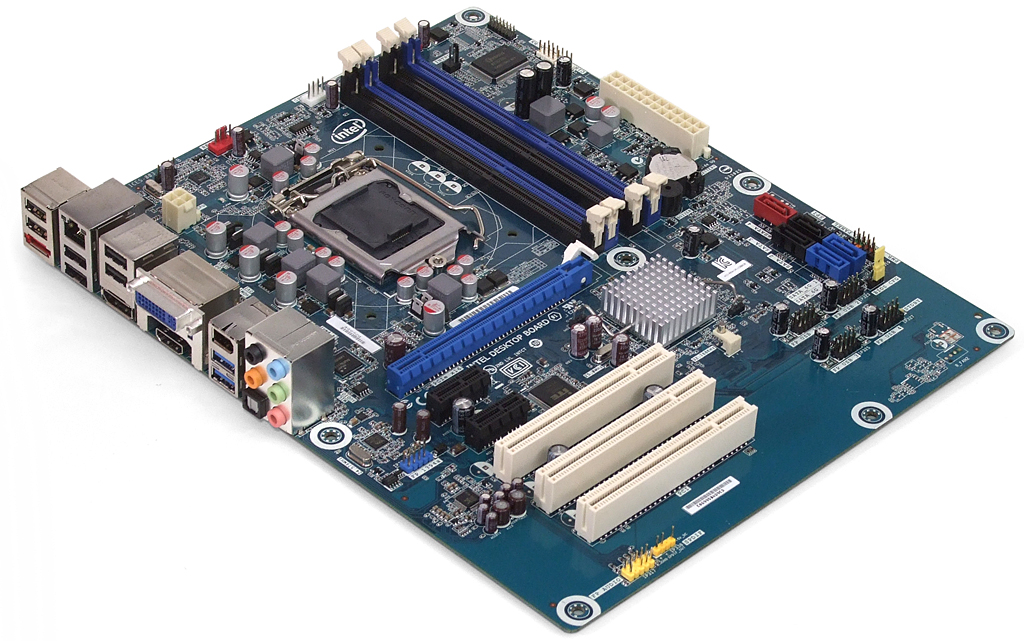From $100 To $160: Five Z68-Based Boards, Compared
Value-oriented system builders celebrate new-found performance and features as Intel continues pushing its mainstream platform towards the high-end. Today, we draw a line in the sand and consider five motherboards priced between $100 and $160.
Intel DZ68DB
Intel’s full-sized ATX motherboards often prove our assertions that microATX boards can also have full feature sets, since those ATX-based designs often include little more than a couple of slots to the bottom of a microATX design. Readers who expect sacrifices in features, performance, and stability from the compact upper-section will be surprised to find that this board is designed for stability first, and has enough other functionality to overcome those perceptions.
The DZ68DB adds DisplayPort to the selection of video outputs and demands that anyone who needs VGA use a DVI to VGA adapter. The adapters are cheap, and the old interface is so rarely used that we’re glad to see it go.
A very small voltage regulator sits topside on the DZ68DB, its lower capacity a limitation of cost rather than layout. At $130, the DZ68DB is the second least-expensive product in today’s lineup.
The DZ68DB competes directly with the Biostar TZ68B+ in price, but while the competing board is designed specifically as a low-cost overclocking platform, the DZ68DB is designed for flexibility. The undersized voltage regulator gets added current protection, and Intel addresses all fourteen of the chipset’s USB 2.0 ports. Eight of those ports are found on four internal headers for front-panel devices.
Two of the chipset’s four SATA 3Gb/s ports are designated as eSATA, though one of these has an internal port. That port is intended to connect to front-panel eSATA jacks, though the extended heat sinks of some oversized graphics cards could block it.
Though the DZ68DB layout appears to be based on a smaller microATX design, it departs from that design by placing the front-panel audio connector in its bottom-rear corner. We didn’t find any alternative solder points for microATX versions.
The DZ68DB includes only two SATA cables in its installation kit, but Intel still adds an old-fashioned connector layout sticker for the inside of the case’s side panel. While commercial builders will appreciate the convenience of that sticker, we’re sure that most home builders would have preferred a third SATA cable.
Get Tom's Hardware's best news and in-depth reviews, straight to your inbox.
-
compton I temporarily used a Biostar TH67+ 1155 mobo until I picked up my new board. After seeing the description of the Z chipset's Graphical UEFI I checked Biostar's website. It looks as though they're released the graphical UEFI for all biostar 1155 mobos.Reply
Now I just wish Intel would do the same -- can't they just rip off Asus's UEFI implementation? -
johnnyb_27 Why not use the MSI's Z68A-G65 instead of the MSI's Z68A-G55? They were the same price but now the drop MSI's Z68A-GD55 to 154 before rebate.Reply -
hatethisbull 90% of this article could've been compressed into the summary page. I would've preferred to see comparisons between, say, a $70 h67 and a high-end z68. Instead of four pages of unsatisfying gaming benchmarks, how about focusing on board usability? Which of the boards have cheap PCI-E retention clips that are going to pop off on first use? Which ones will have blocked ports, etc.Reply -
The Greater Good vilenjanWhat about looks? The gigabyte board looks so meh, while the MSI board is sexy!Reply
Do you stare into your case whilst computing, or do you look at the monitor? -
aznguy0028 The Greater GoodDo you stare into your case whilst computing, or do you look at the monitor?I look into my case daily when I use the computer. There's a reason why there is a window, and hours of hard work for your perfect wiring job deserves much credit and to be stared at. Not to mention coloring schemes that matches your case/mobo pcb color/fan led colors/etc.Reply -
Crashman johnnyb_27Why not use the MSI's Z68A-G65 instead of the MSI's Z68A-G55? They were the same price but now the drop MSI's Z68A-GD55 to 154 before rebate.MSI picked the GD55 because it's SUPPOSED to cost $160. MSI did NOT pick the GD65 because it's SUPPOSED to cost $180. MSI's predictions from a few weeks back simply didn't pan out.Reply -
Crashman jerreddreddisn't it time we lost the PS2 port? and maybe even the DB15 VGA port also?Not PS/2, just VGA. They leave the Multi-I/O controller on the board for compatibility in other areas, so PS/2 is "free" and some people still use it at the high end.Reply
Some cheap monitors still use VGA, but these boards are not for the budget market! For VGA compatibility (for external capture devices and such) they could just use DVI-I and let the oddball user who needs VGA for that oddball purpose supply his own adapter.



